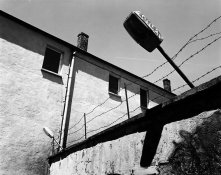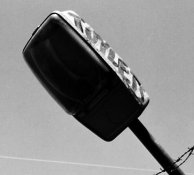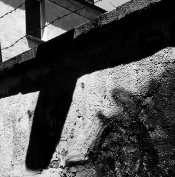I am a bit confused about your statements that devs which give you full speed lose shadow detail. Isn't the definition of full speed higher shadow detail for a given exposure? I accept that you get pleasing results with BTTB and your exposure regime, the results speak for themselves, but this seems to be one of the cases where by coincidence a wrong explanation leads to desirable results.
Hi Rudeofus,
The point that I was trying to make is that the level of desired shadow detail has a direct impact on how each photographer would define the effective speed of a film in combination with a particular developer and the tonal range that they wish to achieve.
Of the developers that I have used (by no means an exhaustive list) I have only found Cellar-Stella to deliver as true increase in film speed. By a 'true increase in film speed' I mean that it retains the level of shadow detail that I want at a higher EI than other developers give me.
I have found that, insufficient exposure for the important shadow areas results in insufficient shadow detail irrespective of whether I have used D76, HC110, a different replenishing two-bath, Perceptol, Crawley's FX-37 or BTTB. Therefore, for my purposes none of these developers deliver full speed.
However, the point that I was making about FX-37 and other developers that are claimed to be full speed is that, whilst they do not (in terms of what I want to achieve) deliver full speed, they do something else that is very useful. They deliver superb tonality with the remaining information on your film. By 'remaining information on your film' I mean that the photographer has chosen to loose the dark shadow information in favour of being able to get the image that they want and are using a developer that will give them excellent tonal separation across the dark mid-tones to the highlights (this, for example, is something where BTTB does not do a good job and is not the correct developer for this way of working).
Why would photographers choose to lose shadow information but still wish to have negatives with a dynamic tonal range? There are many reasons that range from needing to do this because of low light levels/needing to use a particular shutter speed through to it is how they want their images to look like (i.e. photographs that look like Ray Metzker's high contrast images or Daido Moriyami's or Anders Petersen's, etc). Naturally, this way of working is as equally valid as my, or anyone elses, way of working.
In conclusion, I have found the developers that I have used which claimed to deliver full speed higher shadow detail for a given exposure actually do not deliver this within the terms of what I want to achieve. For a photographer working differently, these developers may well deliver full speed within the terms of what they want to achieve. Everything is relative to what one wants to achieve.
To sum up, for the results I want Tri-X developed in D76 needs to be rated at an EI of 200 with the processing very carefully controlled to avoid blown out highlights. To get results like Anders Petersen you load up Tri-X in your Contax T3 shoot at ISO 400 and stew in in the developer to get a punchy tonality from the darker mid-tones through to the highlights. In my case I would say that D76 delivers half box speed. In Petersen's case he would say that D76 delivers box speed.
Bests,
David.
www.dsallen.de




